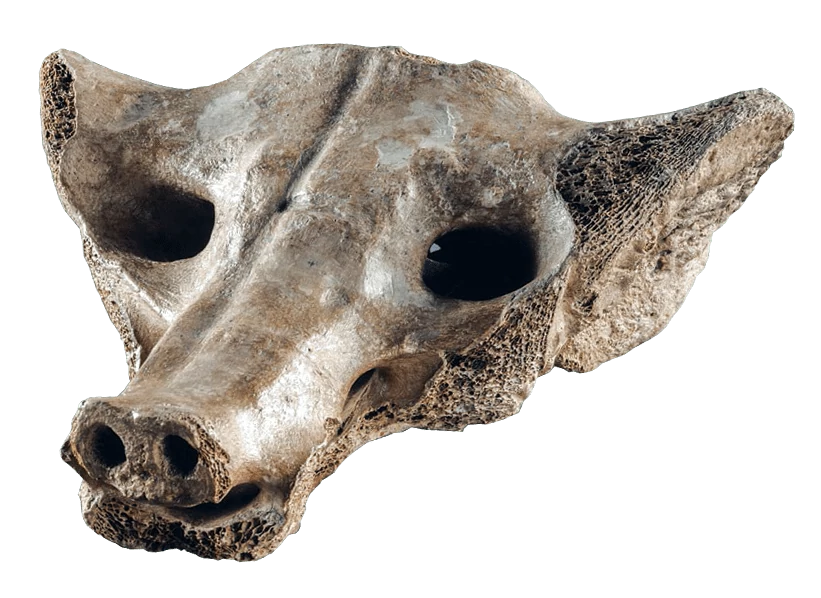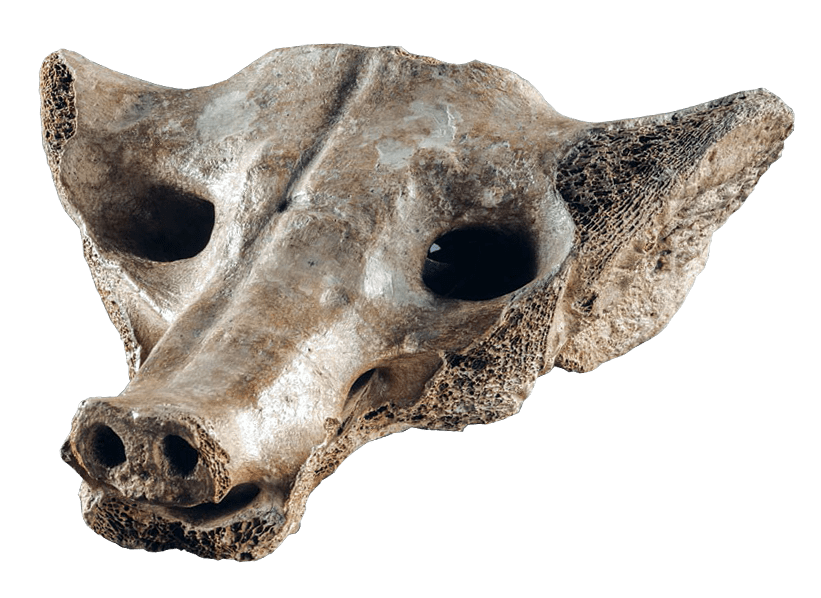

Prehistoric objects often raise a tricky question: was the stone or bone fragment shaped by human hands in an intentional act of creativity, or does it just look like it was?
By definition, an artifact is an object that shows human workmanship or modification. If an object was not modified, it may be a natural object, or a manuport—a natural object that was considered desirable by early humans and carried as a possession, like a river-polished stone or beautiful shell. But identifying human-made marks can be difficult and contentious. To the untrained eye, many early tools look like stones, and in some cases, the opposite is true. Objects that look sculptural may coincidentally resemble a human figure, or a face, or in this case, a dog.
This object is a piece of the triangular pelvic bone of an extinct member of the camelidae family, called the camelid, which was similar to current day alpacas, llamas, and camels. It was discovered in 1870 by an engineer working on a drainage project in Tequixquiac, Mexico. Uncovered at a depth of 12 meters (about 40 feet), the petrified object was acquired by the Mexican geologist Mariano de la Bárcena, who described marks that appear to be made by ancient human hands:
“…the fossil bone contains cuts or carvings that unquestionably were made by the hand of man…the cuts seem to have been made with a sharp instrument and some polish on the edges of the cuts may still be seen…the articular extremity of the last vertebra was utilized perfectly to represent the nose and mouth of the animal.”
But Bárcena’s confidence wasn't shared by the academic community, and in 1923 the objects’ status as an artifact was questioned, specifically whether the marks on the bone were human-made, and that humans had moved the bone from its place of origin. It wasn't until 1965 that the prolific Mexican archaeologist Luis Aveleyra Arroyo de Anda wrote the definitive analysis of the piece, and used the near-perfect symmetry of two circular spaces representing the dog’s nasal cavities to conclude that the Camelid Sacrum is a true prehistoric artifact.
...
Got questions, comments or corrections about Camelid Sacrum in the Shape of a Canine? Join the conversation in our Discord, and if you enjoy content like this, consider becoming a member for exclusive essays, downloadables, and discounts in the Obelisk Store.
